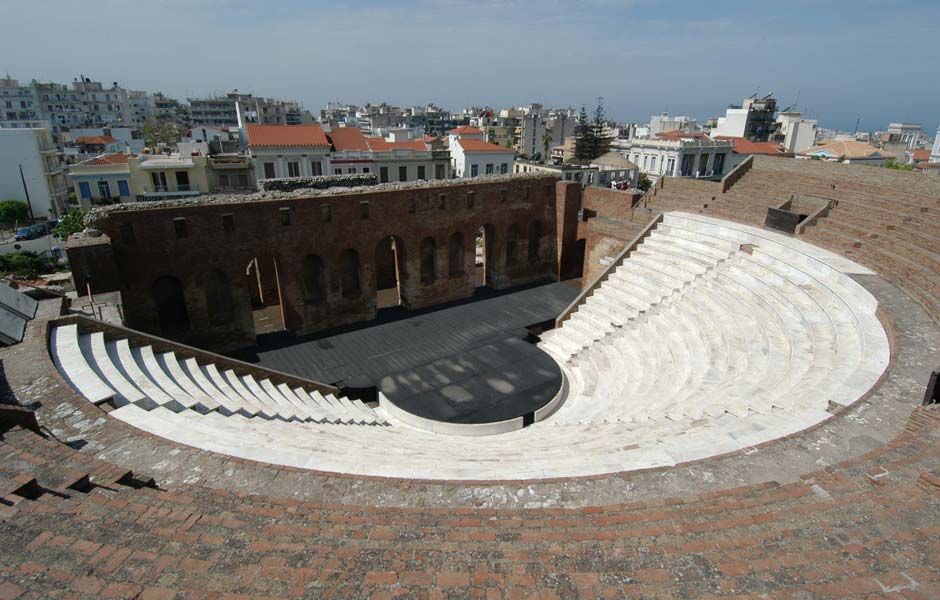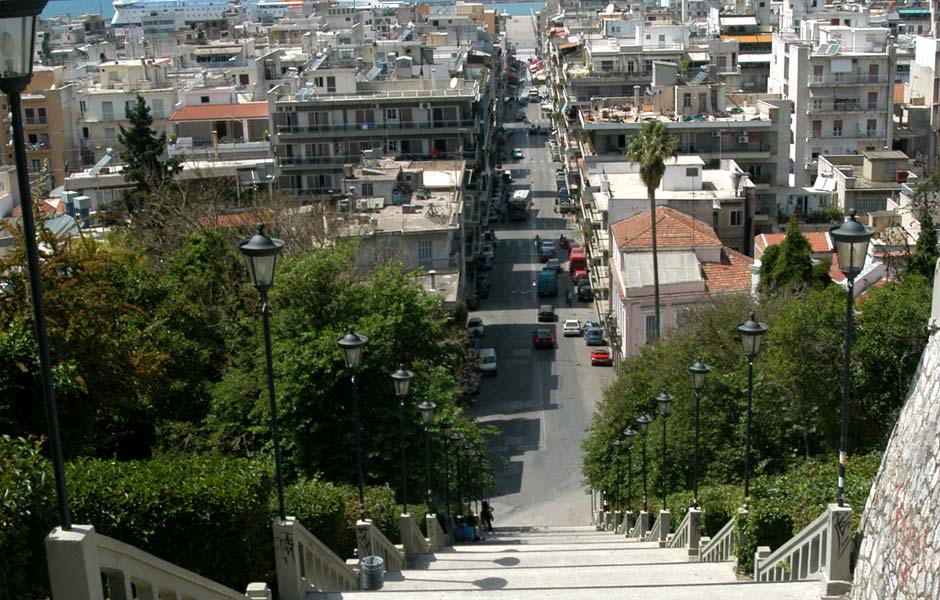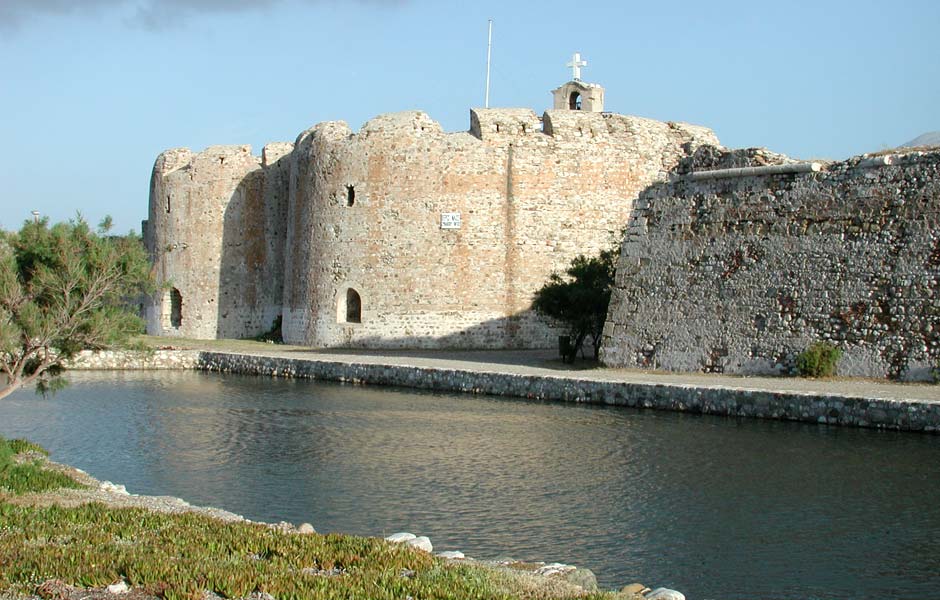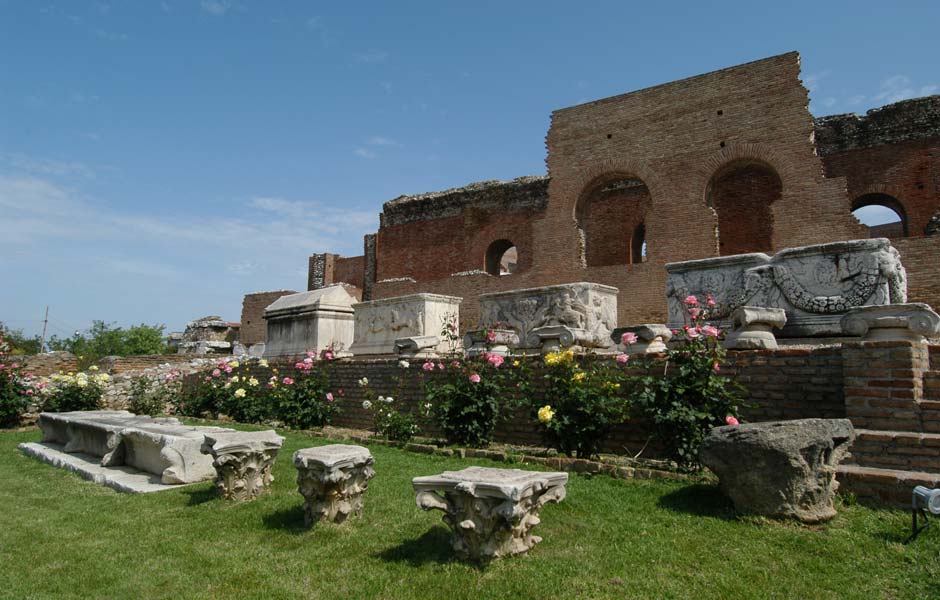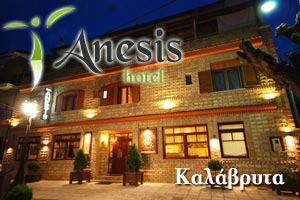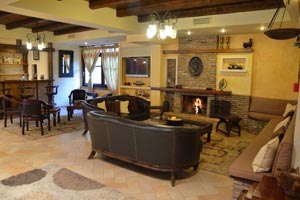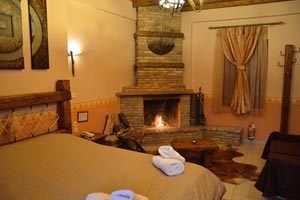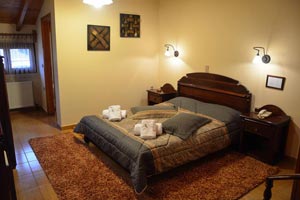Capital of Achaia prefecture, Patra has 160.500 residents and is 219km from Athens. In the city are lots of sights that testify the historical presence of Patra during the centuries. Admirable residues of the Roman period reveal the bloom of that period. Between them the Roman Conservatory in St. George square built around 161 AD used today for cultural events, the 1st century AD Roman amphitheater, the Roman water tower and the two Roman Nymfaia that functioned as recreation space with gardens and water springs. Impressive is the Fortress in Patra build at the second half of the 6th cen AD above the ruins of the ancient acropolis. The Fortress through the centuries had an important role in the defence of the city but functioned also as administrative and military centre until the second World War. From the castle the view of the city and harbour is amazing.
There are churches in the city with particular historical and religious importance. One of them is the church of Saint Andrea, patron saint of the city, where is kept part of the cross of the martyrdom of Apostle Andrea and the saint s skull. Finally the church of Pantokratora with the copper domes, built around 900 AD over the ruins of the ancient temple of Jupiter, which at the Ottoman domination functioned as mosque, and in 1828 was used as a hospital for the soldiers of Mezon.
During the carnival, Patra is the meeting place for thousands of visitors as in the city takes place the bigger Carnival of Greece. The Municipality of the city organises a lot of events at this period with highlight the parade of chariots.
Today Patra is an economic, transport and tourist centre with intense life and one of the most important harbours in the country.
Sights
Κάστρο της Πάτρας
Χτίστηκε από τον Ιουστινιανό τον 6ο μ.Χ αιώνα στους πρόποδες του Παναχαϊκού όρους για την προστασία της περιοχής και των κατοίκων της. Σήμερα λειτουργεί ως αρχαιολογικός χώρος.
Ρωμαϊκό Ωδείο & Ρωμαϊκό Αμφιθέατρο
Δυτικά, στην Άνω πόλη βρίσκεται το Ρωμαϊκό Ωδείο της Πάτρας (2ος αιώνας μ.Χ.), που θεωρείται παλιότερο και από το Ωδείο (Ηρώδειο) της Αθήνας. Αποκαλύφθηκε το 1889, αναστηλώθηκε βασικά τη δεκαετία του 1950 και χρησιμοποιείται ως και σήμερα.
Κοντά στο Αρχαίο Ωδείο ήρθαν στο φως ερείπια ρωμαϊκού αμφιθεάτρου (80-90 μ.Χ.)
Κάστρο Ρίου ή Καστέλι του Μοριά.
Bρίσκεται στην Αχαΐα στον Δήμο Ρίου. Δεξιά και αριστερά του είναι προβλήτες των φέρυ μποτ και δίπλα του περνά η γέφυρα Ρίου-Αντιρίου.
Χτίστηκε στη διάρκεια του τουρκοβενετικού πολέμου το 1499 πάνω στα ερείπια παλαιότερων ρωμαικών οχυρώσεων, από τον Σουλτάνο Βαγιαζήτ Β’. Έτσι μαζί με το κάστρο του Αντιρρίου έλεγχε το θαλάσσιο πέρασμα από το Ιόνιο και τον Κορινθιακό Κόλπο. Από την μια πλευρά του περιβάλλεται από πλατιά τάφρο.
Ξεκινήστε την περιήγησή σας από την οδό Αγίου Νικολάου, τον πιο φημισμένο δρόμο της Πάτρας, που ξεκινά από την Άνω Πόλη και καταλήγει στην προβλήτα του Αγίου Νικολάου. Τα 192 σκαλιά της οδού (από το τελευταίο μάλιστα μπορείτε να αγναντέψετε την πόλη από ψηλά) αποτελούν «σύνορο» του σύγχρονου κέντρου με την Παλιά Πόλη, η οποία είναι χτισμένη περιμετρικά του Κάστρου.
Ναός του Αγίου Ανδρέα
Πλατεία Βασιλέως Γεωργίου
-Το Χαμάμ: Τα “Λουτρά Χαμάμ Πατρών: Έτος 1400” χτίστηκαν επί Ενετοκρατίας και διατηρήθηκαν αργότερα από τους Τούρκους, ενώ λειτουργούν κανονικά μέχρι σήμερα. -Το Θέατρο “Απόλλων”: Κατασκευάστηκε το 1872 με σχέδια του Ερνέστου Τσίλλερ. Είναι το αρχαιότερο από τα σωζόμενα κλειστά θέατρα των νεοτέρων χρόνων και το εντυπωσιακότερο αρχιτεκτονικό στολίδι της Πάτρας. -Τις Aποθήκες “Μπάρρυ”: Συγκρότημα βιομηχανικής αρχιτεκτονικής συνδεδεμένο με την εποχή ακμής της πόλης. Χρησιμοποιήθηκε ως εργοστάσιο νηματοποιίας, κλωστικής, αλευροποιίας και κατεργασίας σταφίδας. Σήμερα λειτουργεί ως κέντρο τεχνών και στεγάζει το info center της Πάτρας. -Τον Πύργο Αχαΐα Clauss: Είναι το πρώτο ελληνικό οινοποιείο που χτίστηκε το 1861 και μέχρι σήμερα παράγει μερικά από τα πιο διάσημα ελληνικά κρασιά. Στους χώρους του ο επισκέπτης μπορεί να θαυμάσει το καταπράσινο περιβάλλον, τα ιστορικά κτίρια, τα ξυλόγλυπτα βαρέλια παλαίωσης από το 1873 της φημισμένης Μαυροδάφνης, και να δοκιμάσει μερικά από τα εκλεκτά κρασιά της Αχαΐα Clauss. – Το Σπίτι του Κωστή Παλαμά: Διατηρητέο κτίριο επί της οδού Κορίνθου 241, στο κέντρο της πόλης, όπου γεννήθηκε ο Κωστής Παλαμάς και η Ιταλίδα πεζογράφος Ματθίλδη Σεράο. -Την Δημοτική Βιβλιοθήκη: Στο κέντρο της Πάτρας, δίπλα από το Δημαρχείο, βρίσκεται το κτίριο στο οποίο στεγάζεται η Δημοτική Βιβλιοθήκη. Η Βιβλιοθήκη διαθέτει σήμερα 120.000 τόμους βιβλία, καθώς και μεγάλο αριθμό περιοδικών, ιστορικά έγγραφα, φωτογραφικό αρχείο κ.ά. Επίσης, σε ειδικό τμήμα της Βιβλιοθήκης φυλάσσονται πολύτιμα έγγραφα και βιβλία με υπογραφές μεγάλων προσωπικοτήτων (π.χ. Κωστή Παλαμά, Γιάννη Ρίτσου, Μουσολίνι κ.ά.). Η Βιβλιοθήκη διαθέτει δανειστικό τμήμα λογοτεχνικών βιβλίων και δανειστικό τμήμα παιδικών βιβλίων στο ισόγειο. -Τον ναό του Αποστόλου Ανδρέα (φωτο): Είναι ο μεγαλύτερος ναός της ορθοδοξίας στα Βαλκάνια, με χωρητικότητα 5.500 ατόμων και εντυπωσιακή αρχιτεκτονική.
History
The older discoveries of the region testify that it was first inhabited during the Stone Age. Centuries later and after the Doric descent, in the region came Achaians from Sparta and Argos, founding important cities like Patra and Aigio. The older residents of the area named until then Ionia, resorted to other cities and mainly in Athens where they began the colonization to Asia Minor founding there the Ionian Dodecapoli.
The city took its name from Patrea, who with his father Preygenis was the head of the Achaians of Sparta. The city was formed from the joining of three towns (Aroi, Masatis and Antheia) and had an important role until the 3rd century BC. The constitution of the Achaian Confederation made Patra spread out to the sea and have important political role.
After the Roman conquest the city knew a new prosperous period and developed as a cosmopolitan centre having the favour of the emperors. Later it had the destiny of the Byzantine Empire and after the liberation from the Turks developed rapidly.
Information
Access-Transportation
By Bus
The modern bridge connecting Rio and Antirio makes road access very easy.
Achaia KTEL (Public Bus Service)
www.ktelachaias.gr
0030 2610 623888
Thessaloniki KTEL (Public Bus Service)
Macedonia Public Bus Service
0030 2310 595425
Athens KTEL (Public Bus Service) – Kifisos station
0030 210 5136185
By Train
TrainOSE
Routes- Customer Service Center: 14511
By Plane
Araxos airport 0030 26930 54000
Distance: 45km from Patra city.
By Ship
Patra is the largest port of Western Greece. There are frequent itineraries to the Ionian Islands, Igoumenitsa and Italy.
From the port of Killini one can travel to the Ionian Islands.
Via the Rio – Antirio ferry.
Patra port authority 0030 2613 615400
Kyllini port authority 0030 26230 92211
Rio port authority 0030 2610 991203
Useful
Area: 3.272 sq km
Capital: Patra
Achaia prefecture belongs to the administrative regional unit of Western Greece and includes the municipalities of
Patra, Egialia, West Achaia, Erimanthos and Kalavrita.
